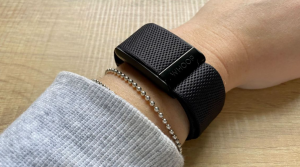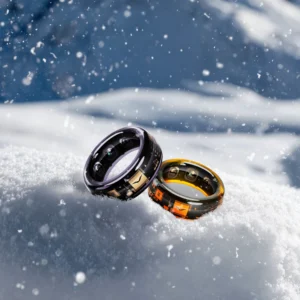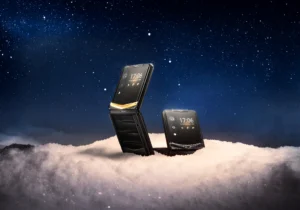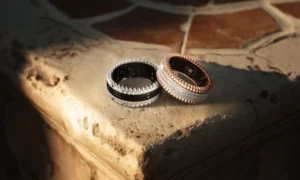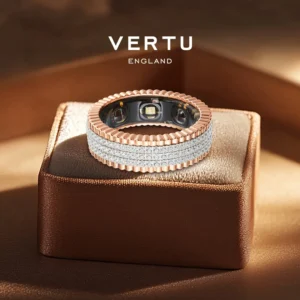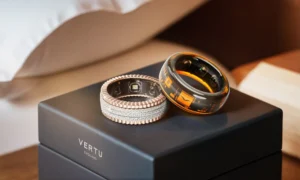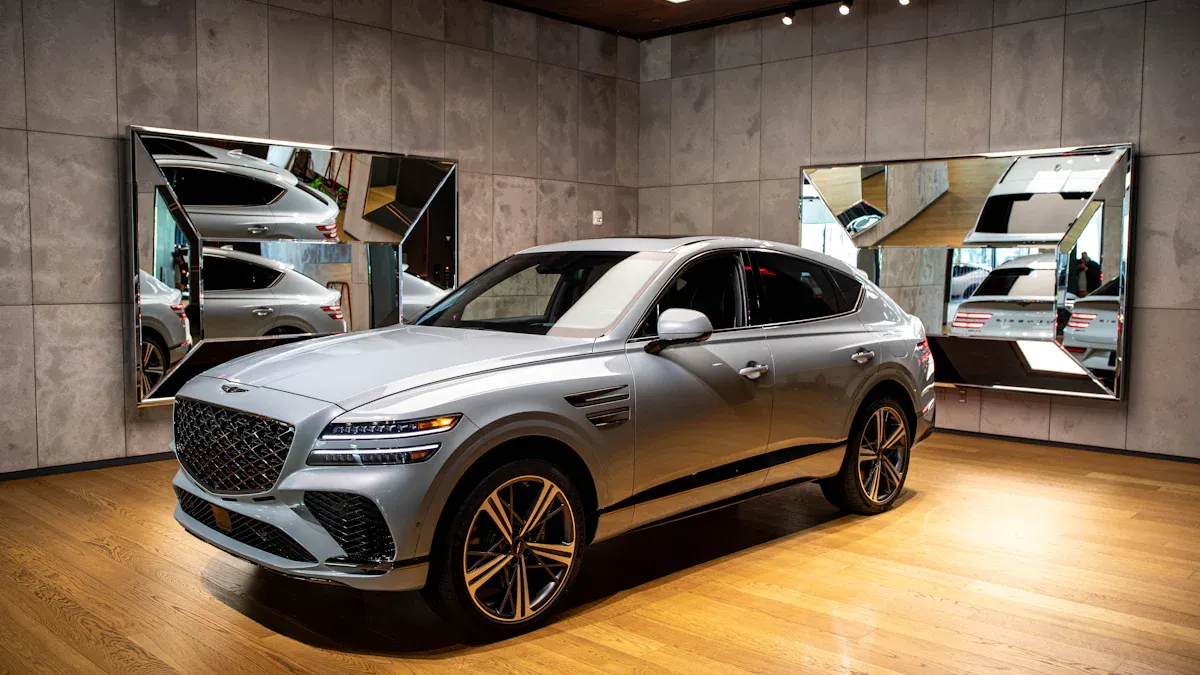
The luxury goods market is changing fast, driven by innovative luxury technology. New advancements are improving how people use products, focusing on experiences instead of merely owning things. Digital tools now offer super-customized options, making each use special. Luxury in 2025 will highlight fun experiences and eco-friendly choices, redefining what luxury means today. Brands now aim to build strong bonds using this advanced technology.
Key Takeaways
-
AI is changing luxury shopping by making it more personal. Brands using AI can make customers happier and more loyal.
-
Augmented Reality (AR) improves shopping by showing products in your space. This makes shopping more fun and engaging.
-
Being eco-friendly is now important for luxury brands. Green practices help the Earth and bring in more customers.
AI and Personalization in Luxury

AI is changing how luxury brands interact with customers. Using smart technology, brands now create unique shopping experiences that feel special and exclusive.
AI-Driven Hyper-Personalization
AI helps brands offer custom experiences by studying customer likes and habits. For example, Gucci grew its revenue by 8% in 2022 using data to personalize products. Montblanc also improved customer happiness by using AI tools to make unique experiences. These examples show how personalization is key to luxury in 2025. With 47% of shoppers ready to pay more for AI-made custom options, the future of luxury is all about making every experience personal.
Predictive Analytics for Luxury Retail Trends
Predictive analytics is another way AI is changing luxury shopping. By studying lots of data, AI can guess what customers want and what’s popular. This helps brands stay trendy and offer products people love. A study shows 89% of luxury brands see AI as a must for future marketing. This smart planning not only increases sales but also keeps customers loyal by meeting their needs early.
Virtual Assistants and Concierge Services
Virtual assistants are improving customer service in luxury shopping. These AI tools work all day, giving advice and helping with tasks. About 57% of luxury buyers think AI makes their service better. Virtual assistants can book events or handle expensive purchases, making every moment easy and special.
AI isn’t just a tool; it’s a way to create amazing experiences. As brands use more AI, they are setting new levels for personal service and customer care.
Immersive Technologies in Neo Luxury 2025
Augmented Reality (AR) for Personalized Shopping
Augmented Reality (AR) is changing how people shop. It mixes the digital and real world. AR lets you see items in your space before buying. Brands like Louis Vuitton and Burberry use AR to help you try on accessories or check furniture in your home. This makes shopping more fun and personal.
In 2025, customization is a big focus in luxury. A study shows 75% of luxury shoppers want personalized experiences. AR fits perfectly with this trend, making shopping more interactive and tailored to you.
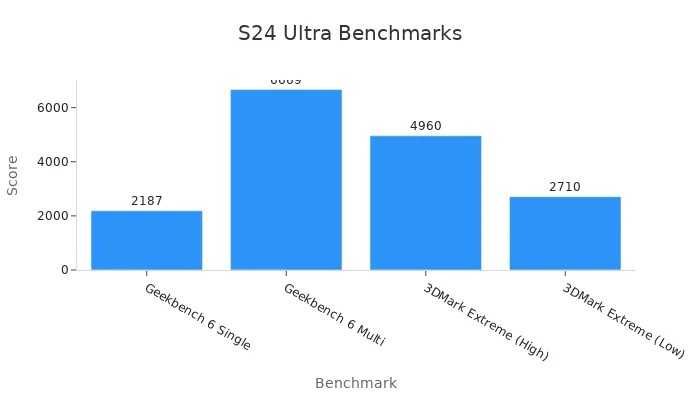
Virtual Reality (VR) for Brand Experiences
Virtual Reality (VR) creates fully digital experiences for shoppers. You can visit virtual stores or watch fashion shows from home. Brands like Dior and Gucci use VR to make shopping exciting and memorable.
VR also helps brands measure success. They track how long you use VR and what you do after. They check if you buy something or enjoy the experience. These metrics show VR is great for connecting with customers.
|
Metric Type |
Description |
|---|---|
|
Tracks how much time users spend with VR content. |
|
|
Conversion Rates |
Measures actions like purchases after using VR. |
|
User Satisfaction |
Collects feedback to see if users are happy with VR. |
|
Return on Investment (ROI) |
Compares money earned from VR campaigns to the costs. |
The Metaverse: A New Way to Shop Luxury
The metaverse is changing luxury shopping. It offers virtual spaces to shop, explore, and connect. Brands like Gucci and Nike sell digital items and NFTs here. Gucci made $11.56 million from NFTs, while Nike earned $185 million.
The metaverse is growing fast. By 2026, it could be worth $6.61 billion. By 2030, it might reach $50 billion, says Morgan Stanley. This shows how the metaverse will shape luxury shopping in the future.
-
A 2021 Bain & Co report says online sales will make up 28%-30% of luxury sales by 2025.
-
Gucci’s NFT resales have passed $31 million, proving the metaverse is profitable.
The metaverse isn’t just a trend; it’s the future of luxury. Brands are using it to create new, exciting ways for you to shop and connect.
Sustainability and Ethical Innovation
Luxury brands are focusing on being eco-friendly and ethical. They use better materials, clear sourcing, and new ideas to change luxury in 2025.
Eco-Friendly Materials and Smart Manufacturing
Eco-friendly materials are changing how luxury items are made. Brands now check where materials come from to help the planet. They pick suppliers who care about nature. For example:
-
Leather makers use plant-based dyes and manage forests responsibly.
-
Smart factories save energy and cut down on waste.
These steps help the Earth and make brands look good. But, it’s hard to balance costs and being eco-friendly. Studies show these efforts cost more but build customer trust and future profits.
Blockchain for Transparency and Ethical Sourcing
Blockchain makes luxury supply chains more honest. It tracks where materials come from and proves they are real. Groups like Aura Blockchain Consortium, led by LVMH and Prada, use it for fair sourcing. De Beers uses blockchain to show diamonds are conflict-free. This gives you proof about where luxury items come from, building trust.
Second-Life Business Models in Luxury
Second-life models are becoming popular in luxury. These include reselling, renting, or fixing old items. They appeal to people who care about the planet more than owning things. For example, brands now sell pre-owned items that are checked for quality. This reduces waste and gives you new ways to enjoy luxury.
Being eco-friendly is now a must for luxury brands. It’s shaping how they grow and connect with you.
Digital-First Strategies for Luxury Brands
Luxury brands are using digital tools to change how you shop. They combine new technology to make shopping easy and personal for you.
E-Commerce and Phygital Integration
Online luxury shopping is growing fast. It mixes online ease with in-store luxury. This mix, called phygital, lets you shop online and see items in stores. It gives you the best of both worlds.
For example:
-
Phygital combines online tools with real-life stores for better shopping.
-
You can browse online but still touch and see items in person.
Brands use data to study your habits and give you custom options. This makes you feel special. Online luxury shopping is changing quickly, helping brands sell more.

Social Commerce and Influencer Marketing
Social media is changing how you find and buy luxury items. Platforms like Instagram and TikTok help brands connect with you. Influencers show products in real life, making them feel trustworthy.
For example:
-
A fashion brand worked with influencers to launch a collection. This increased online sales by 25%.
-
A jewelry brand’s holiday campaign with influencers boosted website visits by 40% and sales by 18%.
These methods not only increase sales but also make brands feel closer to you.
Omnichannel Experiences for Seamless Engagement
Omnichannel means you get the same experience everywhere—online or in-store. Luxury brands use this to keep you coming back. Studies show brands using omnichannel keep 13% more customers each year.
This lets you start shopping online, visit a store, and finish on your phone. By connecting all channels, brands make shopping smooth and personal for you.
Digital tools are not just trendy; they are the future of luxury. These strategies create special experiences for you and make luxury feel even more unique.
Counterfeit Prevention and Brand Integrity
Luxury brands are working hard to stop fake products. To keep their integrity and prove items are real, they use smart tools like NFC tags, blockchain, and AI. These technologies protect your purchases and build trust in luxury brands.
NFC Tags and Smart Packaging for Authentication
NFC tags and smart packaging help you check if items are real. You can scan products with your phone to confirm their origin. RFID technology tracks materials step-by-step, from making to delivery. This ensures high standards are met.
-
Key Benefits of NFC Tags:
-
Tracks luxury goods in real time.
-
Confirms authenticity instantly.
-
Boosts confidence in product quality.
-
|
Study |
Key Finding |
|---|---|
|
Zebra’s Pharmaceutical Supply Chain Vision Study |
90% of surveyed patients value verifying that products are not counterfeit. |
NFC tags give you peace of mind. They make sure your luxury items are genuine and untouched.
Blockchain for Provenance and Trust
Blockchain helps you see the full journey of luxury items. It creates a safe record of ownership and transactions. This shows where materials come from and proves items are real. Each product gets a unique digital identity for easy verification.
-
How Blockchain Enhances Trust:
-
Tracks materials to ensure ethical sourcing.
-
Gives digital certificates to prove authenticity.
-
Builds trust with clear supply chains.
-
Brands using blockchain show they care about honesty and ethics. This openness makes you trust them more and feel closer to the brand.
AI-Powered Counterfeit Detection Tools
AI tools are great at spotting fake products. They study thousands of details in images to find counterfeits. AI learns fast and keeps up with new tricks used by counterfeiters. This helps brands stay safe from threats.
-
Why AI is Effective:
-
Adapts to new counterfeiting methods quickly.
-
Protects brands and builds customer trust.
Luxury brands are using AI more and more. These tools protect their reputation and assure you that your items are real.
Smart tools like NFC, blockchain, and AI are changing how brands fight fakes. They make sure every luxury item you buy is real, ethical, and worth your money.
Luxury in 2025 will focus on new ideas, eco-friendly choices, and personal touches. Brands will use these trends to make luxury feel special and improve your experience. A study shows how important these trends are:
|
Trend |
Importance (%) |
|---|---|
|
Caring for the planet |
72 |
|
Custom-made experiences |
75 |
|
Digital luxury shopping |
71 |

Flexible and fair practices will help modern luxury brands succeed. These changes will match what you want and need.
FAQ
What does neo luxury mean?
Neo luxury is about unique experiences and being eco-friendly. It mixes technology with caring for the planet and exclusivity to fit what people want today.
How does AI make luxury shopping better?
AI makes shopping personal by learning what you like. It also helps with advice, trend predictions, and better customer service using virtual assistants.
Why does sustainability matter in luxury?
Sustainability uses fair practices and planet-friendly materials. It builds trust and matches what people care about, making brands more responsible and attractive.

